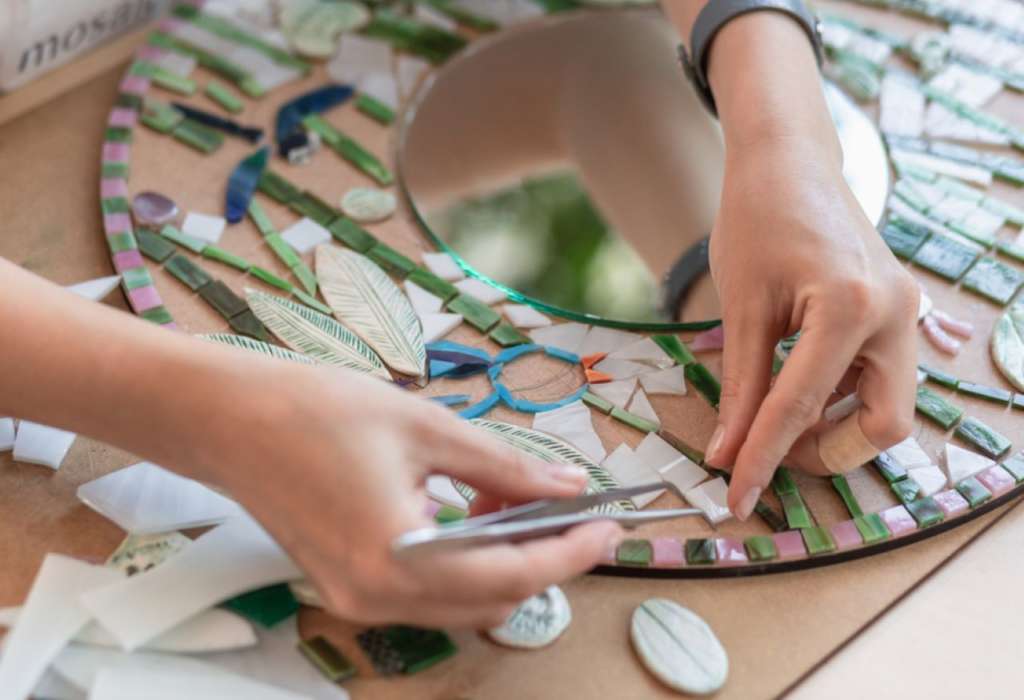Considering a Course in Mosaics?
If you’re curious about the art of decorating a surface with pictures and patterns made of small pieces of stone, glass or tiles of different colours, you can easily learn about this through a course in mosaics. Mosaics can be an excellent hobby to have that will allow you to have fun and let those creative juices flow. Doing a course such as mosaics has many benefits for your mental health and wellbeing too. There are lots of courses in mosaics currently available and for a variety of levels and age groups from beginners to advanced and from children to adults’ classes.
What are Mosaics?
A mosaic is an artistic technique that uses small parts to create a whole object or image. Mosaics are generally assembled using tiny tiles that are made of stone, glass or other materials. Generally speaking, the tiles are square, however, they can also be round or randomly shaped. The small square tiles are known as tesserae and the rounded tiles are known as pebbles. There are two methods for creating mosaics. The first is referred to as the direct method. When using this technique, artists place the tiles directly on the final surface, whether that be on a table, wall or other objects.
The second method is referred to as the indirect method. This technique is ideal for large scale pieces with a lot of intricate details. Using this technique, artists place the tiles on a backing paper that is later transferred to the final surface once the mosaic is complete. This technique enables the artist to work on a flat, horizontal surface and then place larger sections at once on vertical surfaces like columns or walls. Mosaics can be used indoors on walls, floors and ceilings. Mosaics are sometimes used outdoors on pavements.
Mosaic History
Mosaics have been around for thousands of years as an art form. They were initially discovered in ancient Mesopotamia, where small pieces of tile were discovered in a temple from the third millennium BC. These artifacts were straightforward and random. It wasn’t until the Romans and ancient Greeks that mosaics began to depict real-life patterns, symbols and scenes.
As years passed, mosaics became more realistic and intricate. Mosaic artwork became culturally significant across the globe. Beginning in the fourth century, mosaics depicting Christian scenes were immortalized in famous basilicas and churches across Europe. Archaeologists have also discovered mosaics with colourful geometric patterns in Asia and the Middle East.
Eventually, this technique fell out of fashion during the Renaissance and was replaced with oil painting. During the Victorian and Georgian era, mosaic jewellery became popular. Jewellers would create micro mosaic scenes and set them in necklaces, rings and brooches. Unfortunately, making this jewellery was time-consuming and tedious, and this art form is not commonly seen today.
What Will I Learn?
Students will be given a background to mosaic design, design techniques in terms of pattern and colour and contemporary application of mosaic. You will learn about the application of tiles or glass and how to use different adhesives and about interior mosaic on floors and walls and mosaic on furniture or vessels and on garden sculpture.
If you’re serious about doing a course in mosaics, check out courses near you in the Nightcourses.co.uk national course finder.







